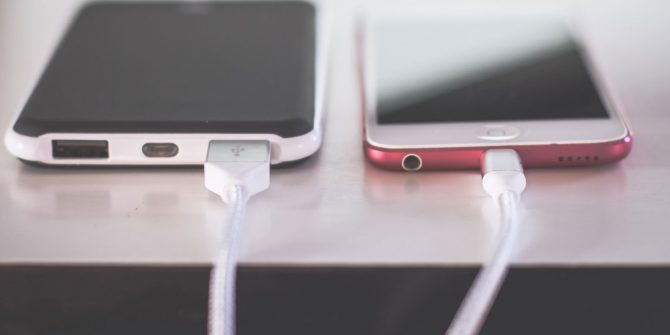We, as a species, have evolved by eventually setting ourselves on top of the entire food chain. Nevertheless, the days of wandering for food with our empty bellies still haunt us genetically and that may be the reason why we sometimes make irrational decisions as to whether we actually need to have our supplies full or not: electric car battery, refrigerator, gas tank, stomach and our phone battery.
The scenario is simple:
- Joe wakes up. He takes a look at his phone, it’s 7am. Battery is at 75%, because he used Chargie to stop it.
- Joe eats his breakfast, sips some coffee while browsing through some news and his Facebook feed, maybe some e-mails. Battery goes down to 70%.
- Joe drives or takes the subway or bus to work, maybe he uses the power-hungry Waze, or scrolls through his Facebook feeds. Battery drops to 50%. At this level, the phone doesn’t get very hot because the internal resistance hasn’t dropped much yet, the battery has about 3.7V (ideal).
- He places his phone on the wireless charging pad at work. The pad also has a Chargie attached before it, so Joe’s Chargie app on the phone detects that it’s being charged, tests the power line, decides that it’s not the home charger, and looks for the work charger. After blinking the power a few times, it connects and quietly recharges the phone to 65%
- Joe uses his phone throughout the day, the battery oscillates maybe between 40% and 60%, but is stopped every time it reaches 65. Battery degradation: almost zero.
- After work, Joe gets back home. Before leaving work, he pumps some more power into the phone by setting Chargie to 70%.
- So maybe he goes to a bar, maybe he picks up his wife or kids from somewhere, it gets late.
- Joe goes to sleep at about 11pm. His battery, in its high 30s, is still giving him enough power without having been stressful throughout the day.
- Cycle repeats. Battery lasts forever without a hitch. Joe only takes it to 100% on occasion, which is by far less damaging than otherwise keeping it there all the time with no practical purpose.
So what’s the catch, you may ask.
Had Joe not used Chargie, the battery would’ve been at 100% or in its high 80s or 90s all day long. After a year, Joe’s battery would’ve started to die on him on long journeys or at times when he’d needed that phone. Joe would’ve been unhappy.
By only taking the charge to 70% or 60% or the lowest usable value for the day, Joe still has enough power in it and he’ll be able to use his phone at full capacity and speed for a much longer time. Should he decide to buy a new phone, the old one would still have a long fight until becoming technologically obsolete.
Joe is happy and so is the planet, because you know, recycling and reusing more are closely linked to lowered pollution levels of all kinds. And Joe’s battery is still at some 95% capacity after 5 years of usage. In a perfectly functioning phone, after an absurd amount of usage.
Bottom line: you don’t need a 100% charged phone if you work in an office where it sits on a charger all day long, anyway.
This practice just degrades your battery and the old 100% is not the same 100% after a while. The battery starts to get hot, the phone runs slower to prevent further damage by overheating, and after a year and a half you end up selling it for nothing or taking it to a repair shop. And buy a new, glorious phone that does about the same stuff the old one did, but faster – mostly because its new battery can still do it.





